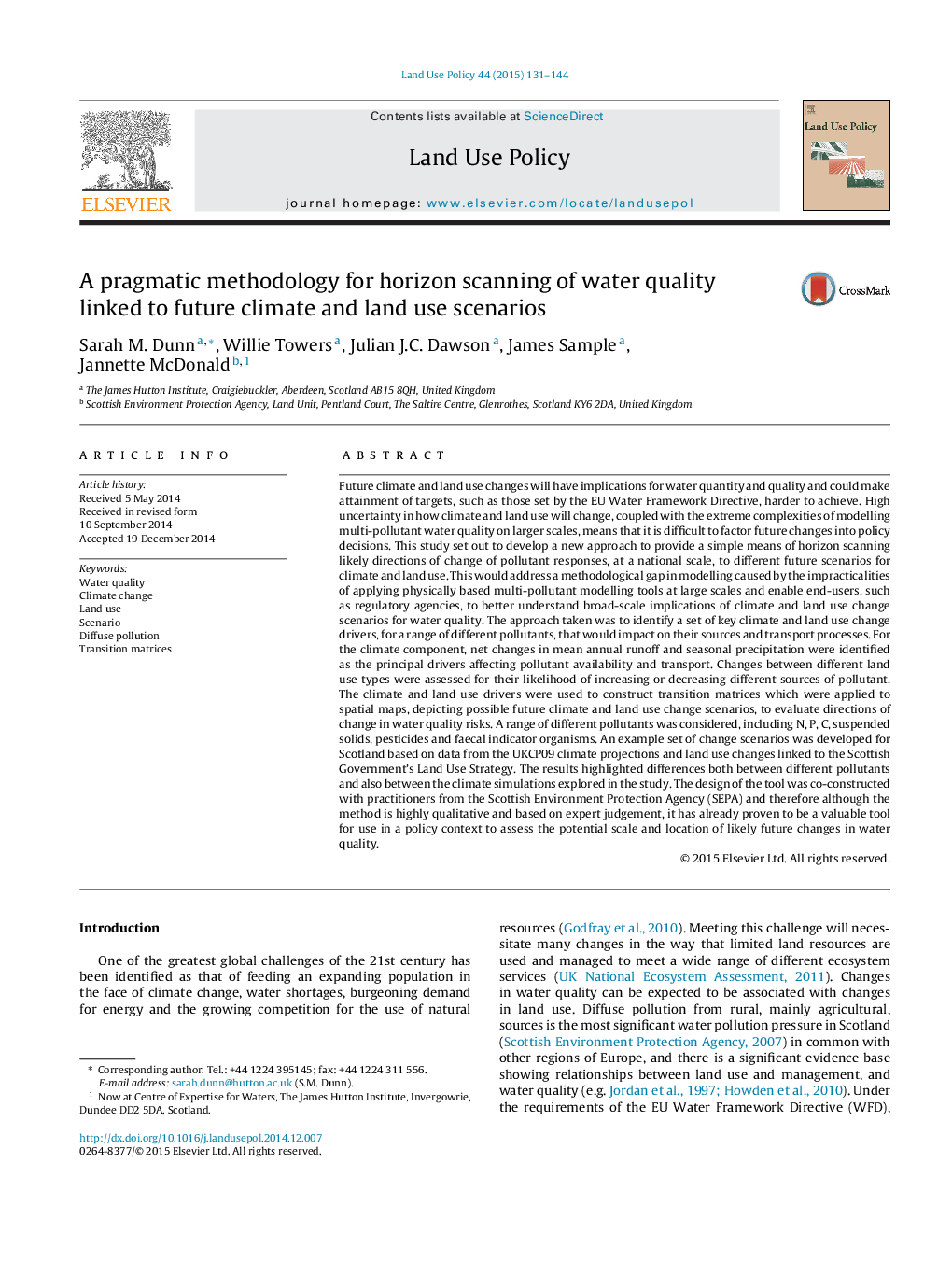| کد مقاله | کد نشریه | سال انتشار | مقاله انگلیسی | نسخه تمام متن |
|---|---|---|---|---|
| 6548274 | 160100 | 2015 | 14 صفحه PDF | دانلود رایگان |
عنوان انگلیسی مقاله ISI
A pragmatic methodology for horizon scanning of water quality linked to future climate and land use scenarios
ترجمه فارسی عنوان
یک روش عملی برای اسکن افقی از کیفیت آب در ارتباط با صحنه های آینده آب و هوا و زمین
دانلود مقاله + سفارش ترجمه
دانلود مقاله ISI انگلیسی
رایگان برای ایرانیان
کلمات کلیدی
کیفیت آب، تغییر آب و هوا، استفاده از زمین، سناریو، آلودگی پراکنده، ماتریس انتقال،
موضوعات مرتبط
علوم زیستی و بیوفناوری
علوم کشاورزی و بیولوژیک
جنگلداری
چکیده انگلیسی
Future climate and land use changes will have implications for water quantity and quality and could make attainment of targets, such as those set by the EU Water Framework Directive, harder to achieve. High uncertainty in how climate and land use will change, coupled with the extreme complexities of modelling multi-pollutant water quality on larger scales, means that it is difficult to factor future changes into policy decisions. This study set out to develop a new approach to provide a simple means of horizon scanning likely directions of change of pollutant responses, at a national scale, to different future scenarios for climate and land use. This would address a methodological gap in modelling caused by the impracticalities of applying physically based multi-pollutant modelling tools at large scales and enable end-users, such as regulatory agencies, to better understand broad-scale implications of climate and land use change scenarios for water quality. The approach taken was to identify a set of key climate and land use change drivers, for a range of different pollutants, that would impact on their sources and transport processes. For the climate component, net changes in mean annual runoff and seasonal precipitation were identified as the principal drivers affecting pollutant availability and transport. Changes between different land use types were assessed for their likelihood of increasing or decreasing different sources of pollutant. The climate and land use drivers were used to construct transition matrices which were applied to spatial maps, depicting possible future climate and land use change scenarios, to evaluate directions of change in water quality risks. A range of different pollutants was considered, including N, P, C, suspended solids, pesticides and faecal indicator organisms. An example set of change scenarios was developed for Scotland based on data from the UKCP09 climate projections and land use changes linked to the Scottish Government's Land Use Strategy. The results highlighted differences both between different pollutants and also between the climate simulations explored in the study. The design of the tool was co-constructed with practitioners from the Scottish Environment Protection Agency (SEPA) and therefore although the method is highly qualitative and based on expert judgement, it has already proven to be a valuable tool for use in a policy context to assess the potential scale and location of likely future changes in water quality.
ناشر
Database: Elsevier - ScienceDirect (ساینس دایرکت)
Journal: Land Use Policy - Volume 44, March 2015, Pages 131-144
Journal: Land Use Policy - Volume 44, March 2015, Pages 131-144
نویسندگان
Sarah M. Dunn, Willie Towers, Julian J.C. Dawson, James Sample, Jannette McDonald,
